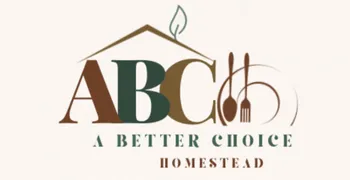
Food Preservation
Welcome to the "Preserving" hub of A Better Choice Homestead! The ability to safely store food for the long term is a cornerstone of self-sufficiency and a fantastic way to enjoy your garden's bounty (or bulk purchases) year-round. Beyond the peace of mind it offers, preserving allows you to capture peak freshness, control ingredients, and save money. While the concept might seem daunting at first, breaking it down into different methods reveals accessible ways to fill your pantry with homemade goodness.
Your Journey to a Resilient Pantry Starts Here!
Each of the following preservation methods offers unique advantages, allowing you to build a diverse and resilient pantry for your family. Whether you're just starting with simple water bath canning or investing in advanced techniques like freeze drying, the satisfaction of preserving your own food is immense.
Water Bath Canning
Water bath canning is a simple and effective method for preserving high-acid foods.
This method involves sealing jars of food in a boiling water bath for a specific amount of time. The high acidity of the food, combined with the heat, creates a vacuum seal and destroys spoilage microorganisms. It's ideal for fruits, jams, jellies, pickles, tomatoes (often with added acid), and salsas.
It's relatively inexpensive to get started (just a canning pot, jars, and lids). It's a straightforward process, widely taught, and produces shelf-stable food with good texture retention for many items.
However, it is limited to high-acid foods; it cannot safely preserve low-acid foods like vegetables, meats, or most soups. And it does require caution when dealing with hot jars and boiling water. I have water bath canning tutorials on my YouTube channel if you want to follow along.
Pressure Canning
Pressure canning is the only safe method for preserving low-acid foods.
Unlike water bath canning, pressure canning uses a specialized canner to achieve temperatures higher than boiling water. These higher temperatures are essential to kill harmful bacteria (like Clostridium botulinum spores) found in low-acid foods. It's the go-to method for vegetables, meats, poultry, seafood, and mixed recipes like soups.
Pressure canning safely preserves almost any type of food, greatly expanding your pantry options. Foods are shelf-stable and ready to eat or use quickly.
This method of food preservation does require a specialized pressure canner, which is a larger initial investment. The process can seem more intimidating at first due to managing pressure, but it's very safe when instructions are followed. You should also follow tested recipes which you can find on the National Center for Home Food Preservation website, University Cooperative Extension sites, and those published by recognized authorities, such a Ball. I have pressure canning tutorial videos on my YouTube channel if you want to follow along.
Dehydrating
Dehydrating is a method of food preservation that removes moisture, inhibiting microbial growth.
This process uses gentle heat and airflow to remove water content from food, shrinking it down and concentrating its flavor. Food can be dried in an oven, a specialized dehydrator (like the Excalibur 9-tray dehydrator I have), or even in the sun. It's versatile for fruits, vegetables, herbs, and even some meats (for jerky).
Dehydrating is relatively inexpensive to operate (after initial dehydrator purchase). It creates lightweight, compact food ideal for snacking, hiking, or long-term storage. And it retains many nutrients and concentrates natural flavors.
However it can be time-consuming, sometimes taking many hours or days. The texture of rehydrated food from dehydrated food is not identical to fresh. And the food requires proper storage to prevent reabsorption of moisture to prevent spoilage.
Freeze Drying
Freeze drying preserves food by removing water through sublimation, locking in nutrients and structure.
Freeze drying involves freezing food solid, then placing it in a vacuum chamber (like the Harvest Right original Medium freeze dryer I own) where a vacuum pump slowly pulls out the ice crystals, turning them directly into vapor (sublimation) without ever becoming liquid. This leaves behind a perfectly preserved, lightweight, and shelf-stable food. It's excellent for nearly all food types, from fruits and vegetables to full meals, meats, and dairy.
Freeze drying preserves up to 97% of nutrients, far more than other methods. This preservation method retains the original taste, texture, and appearance of the processed food exceptionally well upon rehydration. It creates incredibly lightweight and long-term shelf-stable food (up to 25 years when properly stored). And it is versatile for a vast range of foods.
There is a significant initial investment in the equipment and it does require some learning to master the machine and optimal settings. Freeze dried food needs very dry, airtight storage (like Mylar bags with oxygen absorbers) for long-term preservation. I show a wide array of freeze-drying sessions on my YouTube channel if you are looking for tips, tricks, or even recipes!
Ready to explore these methods further? Dive into our detailed guides and discover the tools and techniques to become a confident home food preserver!

FOLLOW US
LEGAL
Copyright 2025. A Better Choice Homestead. All Rights Reserved.